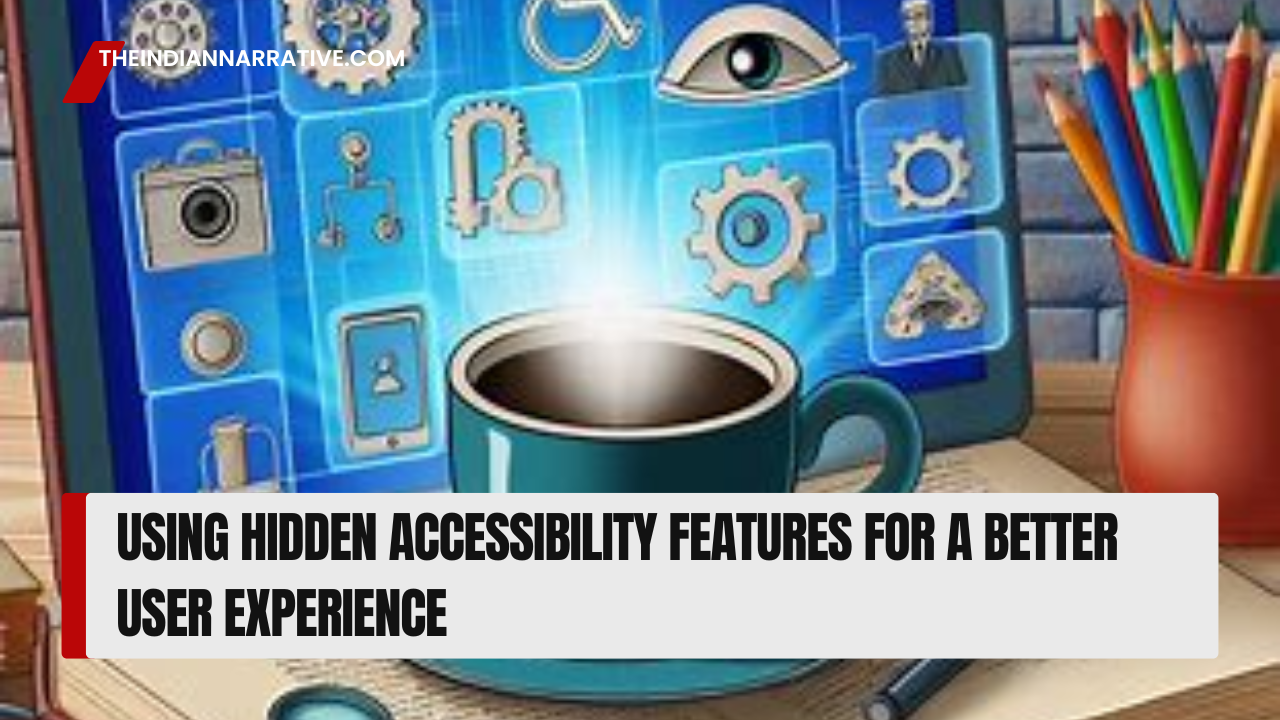Smartphones, tablets, and computers have powerful accessibility features designed to make technology more inclusive. While many people associate accessibility settings with users who have specific disabilities, these features can benefit everyone, enhancing the overall user experience. From optimizing screen brightness to enabling voice control, accessibility settings offer hidden gems that can simplify your day-to-day tasks and improve the way you interact with your devices.
In this blog, we’ll explore some of the hidden accessibility features you might not be using, but should, to enhance your overall digital experience.
1. Voice Control and Voice Commands
Voice control is a feature designed for hands-free device navigation, allowing you to open apps, type messages, or interact with your phone using your voice. It’s not just helpful for users with physical impairments but also great when your hands are full or while multitasking.
How to Use Voice Control:
- Android: Activate Google Assistant by saying “Hey Google,” or go to Settings > Accessibility > Voice Access.
- iOS: Enable Voice Control by going to Settings > Accessibility > Voice Control.

2. Magnification and Zoom
Need a closer look at fine details or small text? Both iOS and Android devices come with built-in magnifiers that can enlarge any part of the screen, giving you a better view without straining your eyes.
How to Activate Magnification:
- Android: Go to Settings > Accessibility > Magnification and enable the feature. Tap the screen three times to zoom in.
- iOS: Go to Settings > Accessibility > Zoom to enable zoom features with a simple double-tap gesture.
3. Screen Reader and Text-to-Speech
Screen readers read aloud the text on your screen, making it easy to consume content without having to look at the screen. This feature is excellent for anyone who wants to listen to articles or messages while on the go.
How to Enable Screen Reader:
- Android: Activate TalkBack by going to Settings > Accessibility > TalkBack.
- iOS: Enable VoiceOver under Settings > Accessibility > VoiceOver.
4. Customizable Display Settings
If you’re sensitive to bright lights or want to reduce eye strain during long periods of screen time, adjusting your display settings can greatly improve comfort. Features like dark mode, color inversion, and text scaling are built to make viewing easier on the eyes.
How to Customize Display Settings:
- Android: Go to Settings > Accessibility > Display to adjust text size, colors, and contrast.
- iOS: Go to Settings > Display & Brightness to toggle Dark Mode, or go to Accessibility > Display & Text Size for more options.

5. Assistive Touch
Assistive Touch helps you control your device using an on-screen menu that acts as a virtual home button, ideal for users who may have difficulty pressing physical buttons. It provides quick access to frequently used actions like screenshots, volume control, and notifications.
How to Enable Assistive Touch:
- Android: Download a third-party app like Assistive Touch from the Google Play Store.
- iOS: Go to Settings > Accessibility > Touch > AssistiveTouch to enable.
6. Hearing Accommodations
For users with hearing difficulties, modern smartphones offer features like Live Caption and hearing aid support. Live Caption instantly transcribes audio from videos and calls, making it easier to follow conversations without sound.
How to Enable Hearing Accommodations:
- Android: Go to Settings > Accessibility > Hearing to access features like Live Caption and sound amplifiers.
- iOS: Go to Settings > Accessibility > Hearing Devices for hearing aid support and Sound Recognition to identify and alert you to important sounds.
7. Gesture Navigation
Gesture-based controls can help users navigate through their devices more quickly, without the need for precise tapping. This is particularly useful for users who prefer swiping motions over pressing small buttons.
How to Enable Gesture Navigation:
- Android: Go to Settings > System > Gestures and enable Gesture Navigation.
- iOS: Gesture navigation is enabled by default in newer iPhone models, but you can customize gestures under Settings > Accessibility > Touch > AssistiveTouch.

8. Siri and Google Assistant for Accessibility
Both Siri and Google Assistant can enhance accessibility by performing a wide range of tasks for you, from sending messages to adjusting settings, without needing to interact physically with your device. These assistants are continuously improving in their ability to respond to accessibility commands, making them an indispensable tool for hands-free use.
How to Activate:
- Android: Say “Hey Google” or press and hold the home button to summon Google Assistant.
- iOS: Say “Hey Siri” or press and hold the side button on iPhones to summon Siri.
9. Focus and Distraction-Free Modes
Sometimes, productivity is all about limiting distractions. Focus or Do Not Disturb modes can temporarily silence notifications and calls, allowing you to stay focused on what matters most.
How to Enable Focus Modes:
- Android: Go to Settings > Digital Wellbeing & Parental Controls > Focus Mode.
- iOS: Go to Settings > Focus to customize different focus modes, like Work or Sleep.
10. Back Tap and Quick Actions
Back Tap is a hidden feature that allows you to perform actions by double- or triple-tapping the back of your phone. This feature is great for quickly launching accessibility shortcuts, taking screenshots, or even opening apps without interacting with the screen.
How to Enable Back Tap:
- iOS: Go to Settings > Accessibility > Touch > Back Tap to assign custom actions.

Conclusion
Accessibility features are no longer just for individuals with disabilities. These hidden settings can significantly improve your device’s usability and performance, making everyday tasks easier, faster, and more efficient. By taking advantage of these built-in tools, you can personalize your device to better suit your needs and create a seamless user experience.
Whether you want to enhance productivity, reduce eye strain, or simply navigate your device more easily, exploring your device’s accessibility settings will unlock new potential for optimizing your digital life.





Be First to Comment